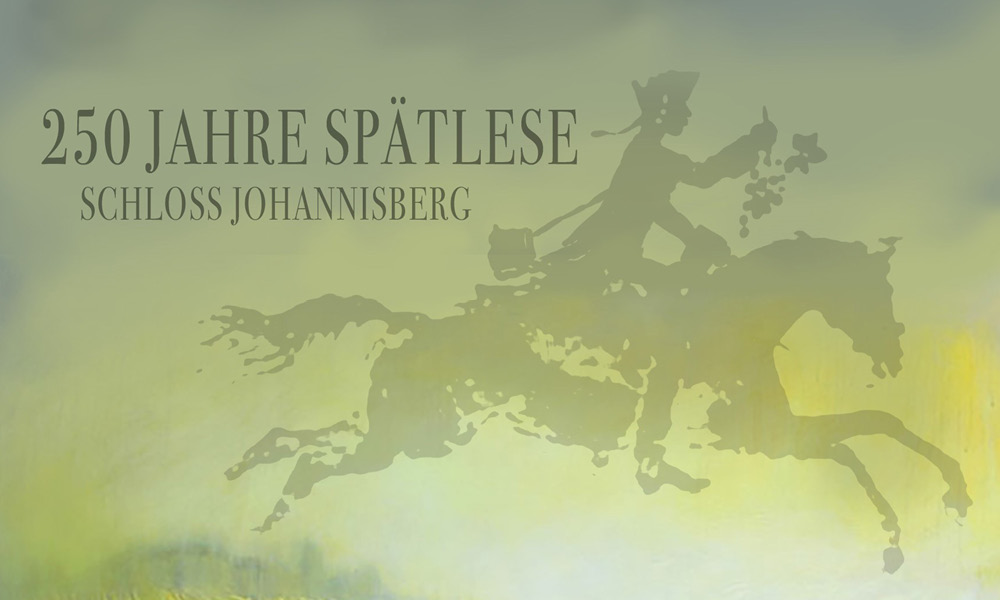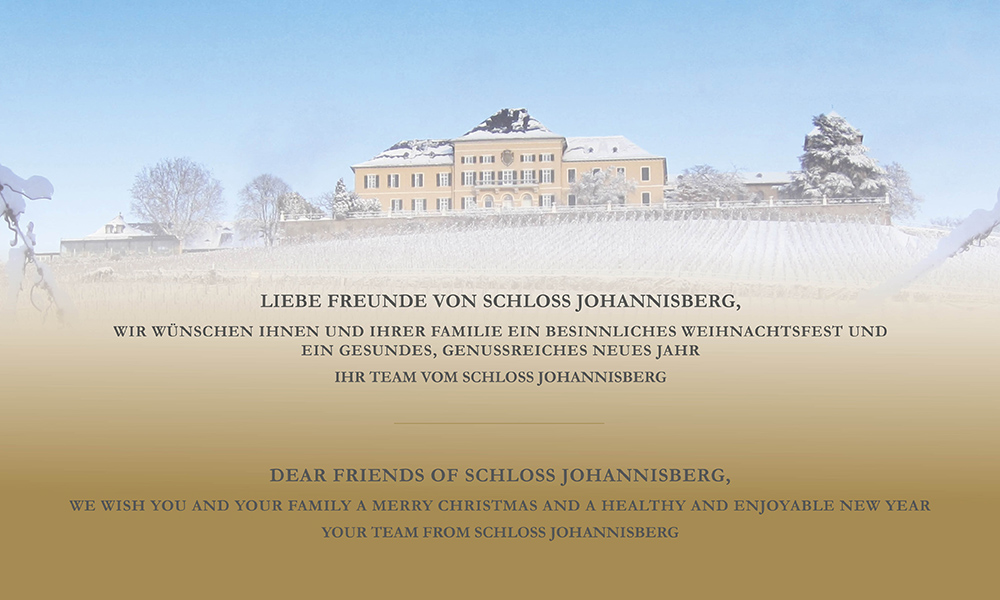
If there had been tabloids 250 years ago, the people of Rheingau region would probably have noticed the following headlines on the front page:
“2 weeks late – can the Benedictine monks on Johannisberg still save their harvest?” or “Courier responsible for rotten grapes – is he now facing the maximum penalty?”
But what looked like a catastrophe back in the fall of 1775 turned out to be a happy coincidence. The year 1775 has always been regarded as the birth year of the Spätlese – and Schloss Johannisberg as its birthplace.
But let’s start from the beginning.
In the 18th century, the rule in Rheingau region was that the grape harvest should be completed by St. Gall’s Day, October 16th. The then owner of Schloss Johannisberg and prince abbot of Fulda, Konstantin von Buttlar, did not like this rule. He wanted to decide for himself when the grapes were harvested in his vineyards and introduced his own quality control system. Every year, as the grapes gradually ripened, a courier from the Benedictine monks was to ride to Fulda with bunches of grapes in his luggage and hand them over to the prince abbot. Konstantin von Buttlar checked the ripeness and quality of the grapes and, depending on the result, issued a harvest permit with the harvest date. The courier then rode back to Johannisberg, where he was expected back by the monks about a week later.
This system worked well over the years, but things were to change in 1775. The courier was two weeks late. The reasons for his delay are still unclear today, but it is now certain what happened in the vineyard during these two weeks: firstly, the grapes became riper every day and the sugar content increased. In addition, the Botrytis fungus, now known as noble rot, was spreading on the grapes. At that time, the value of noble rot was not yet known. The noble rot contributes to the skin of the grapes becoming finely perforated and allowing water to evaporate. This results in a concentration of sugar and aromatic substances in the grapes. When the monks were finally able to start the harvest in 1775 after two weeks of waiting, they only saw what they thought were rotten grapes on the vines and feared for the quality of the wine. Despite everything, they had to produce wine again and picked the grapes, albeit with little hope of a good vintage. And lo and behold, when the wine from these late-picked grapes was tasted in the spring of 1776, it turned out to be a firework of sweetness and richness, a heavenly delight!
And so the prince abbot from Fulda decided to only start harvesting in future when all the neighboring vineyards in Rheingau region had finished their harvest. Gradually, the higher “Prädikate” Auslese, Beerenauslese and Trockenbeerenauslese were created.
It was Prince of Metternich who, around half a century later, laid the foundation for our color system and dipped the bottles of Spätlese in sealing wax. Today at Schloss Johannisberg, we speak of the Grünlack Spätlese. We have erected a monument to the grape courier in our courtyard and proudly call him our late harvest rider today.
If there had been a tabloid press 250 years ago, the appropriate headline would have been the following:
“Those who are late will be gifted by life itself.”

